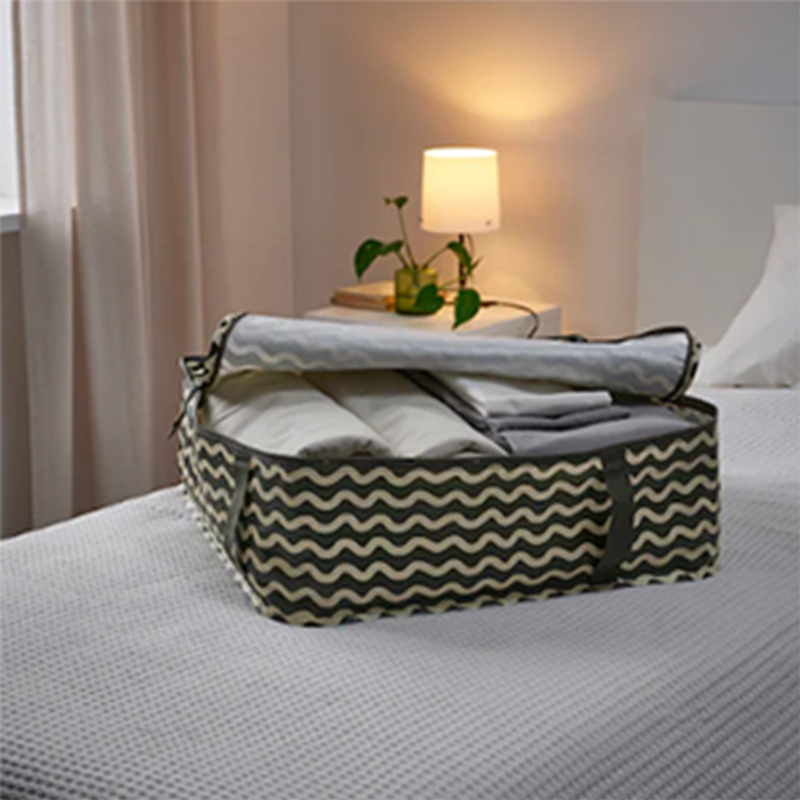Designing quilt storage bags to prevent fabric degradation is a meticulous process that involves selecting appropriate materials, incorporating functional design elements, and adhering to best practices that ensure long-term preservation. Quilt storage bags offer significant advantages over traditional storage methods by providing tailored protection that maintains the integrity of the fabric and structure of the quilt. To achieve this, one must consider the breathability, acidity, and durability of the materials used, as well as the construction features and additional protective measures that can be integrated into the design.
Firstly, the choice of materials is crucial. Breathable fabrics like cotton or linen are preferred for their ability to allow air circulation, thus preventing moisture buildup that can lead to mold and mildew. These natural fibers are gentle on delicate quilt fabrics, reducing the risk of abrasion. Additionally, using acid-free materials throughout the bag, including linings and labels, is essential to prevent chemical reactions that could degrade the quilt over time. For quilts that might be exposed to light during storage, UV-resistant fabrics are beneficial as they protect against fading and weakening due to ultraviolet light exposure.
The construction of the storage bag must ensure durability and ease of use. Reinforced seams are necessary to withstand the weight and bulk of quilts, preventing tears that could expose the quilt to environmental hazards. Smooth, non-abrasive linings are important to avoid snagging and wear on the quilt’s surface. Incorporating ventilation features such as mesh panels or grommets can promote air circulation while keeping out dust and pests, thereby maintaining an optimal environment within the bag.
Functional design features enhance the usability and protective qualities of quilt storage bags. Providing various sizes ensures that quilts can be stored without excessive folding or compression, which can cause creases and fabric stress. Sturdy handles and smooth-operating zippers facilitate easy handling and access without risking damage to the quilt. Clear windows or labeling options allow for easy identification of the contents without the need to open the bag frequently, reducing unnecessary handling.
Additional protective measures can significantly enhance the preservation of quilts. Including acid-free tissue paper for users to place between folds helps prevent creases and absorbs any residual moisture. Natural moth repellents such as cedar or lavender sachets can be incorporated into the design to protect against pests without exposing the quilt to harmful chemicals. Moisture absorbers like silica gel packets can be included to control humidity levels inside the storage bag, further safeguarding the quilt from environmental damage.

Educating users on proper usage is also vital. Providing clear cleaning instructions ensures that quilts are free from dirt and oils that could attract pests or cause deterioration before storage. Guidelines on folding techniques can help minimize stress on the fabric and avoid permanent creases. Recommendations for a climate-controlled storage environment, away from direct sunlight, extreme temperatures, and high humidity, are essential for maintaining the quilt’s condition.
Periodic inspection and airing of quilts should be encouraged to check for signs of damage, pests, or mildew, and to refold quilts along different lines to prevent permanent creasing. Offering educational materials about quilt preservation can help users understand the importance of these practices and the role that well-designed storage bags play in protecting their cherished textiles.
In summary, the best practices for designing quilt storage bags to prevent fabric degradation involve careful selection of materials, thoughtful construction, and the integration of protective features. These elements, combined with proper usage and storage guidelines, ensure that quilts are preserved in excellent condition, showcasing the significant advantages of using quilt storage bags over other storage methods. By following these guidelines, designers can create storage solutions that not only protect quilts but also extend their lifespan, preserving their beauty and heritage for future generations.

 English
English 中文简体
中文简体
















